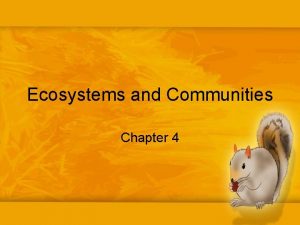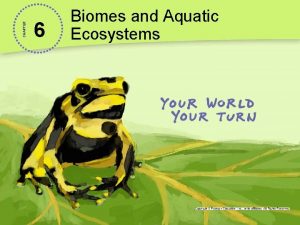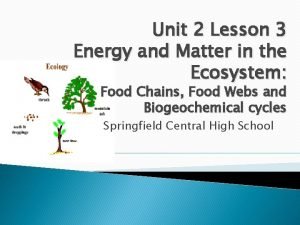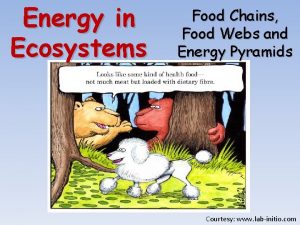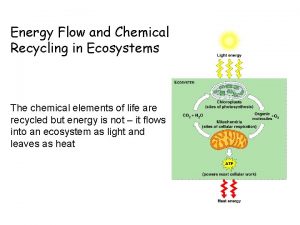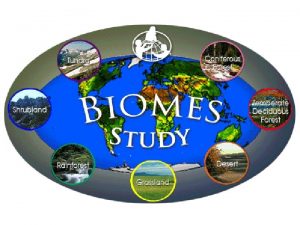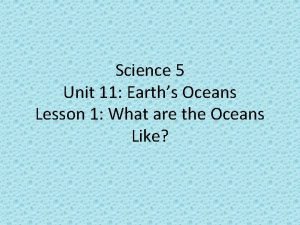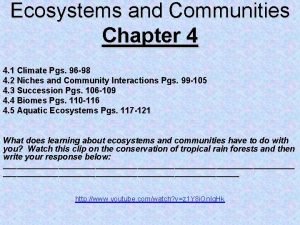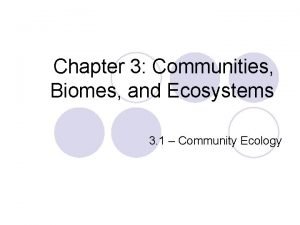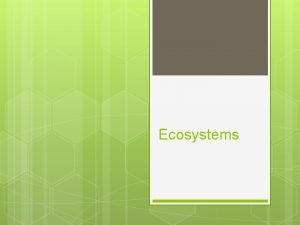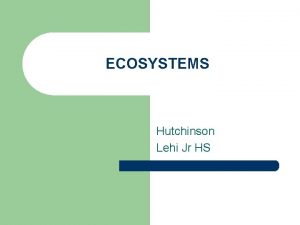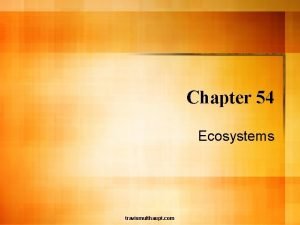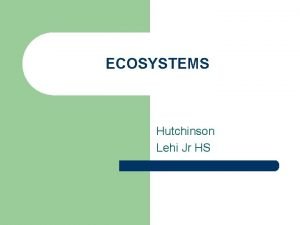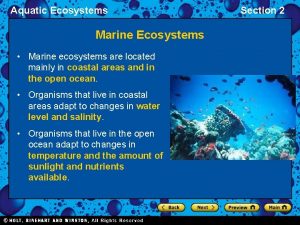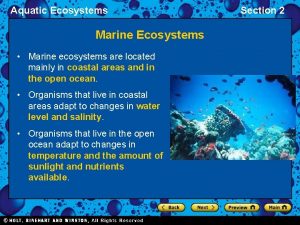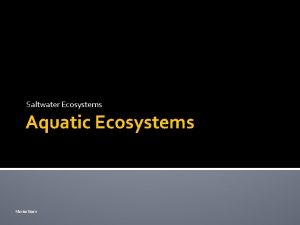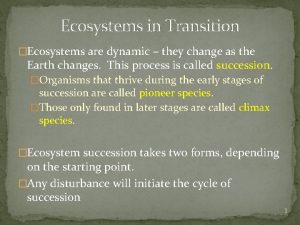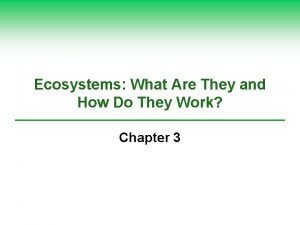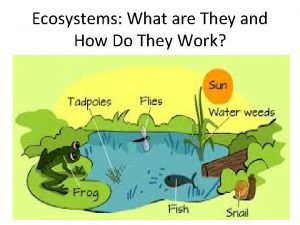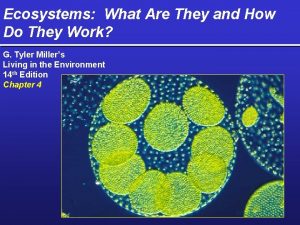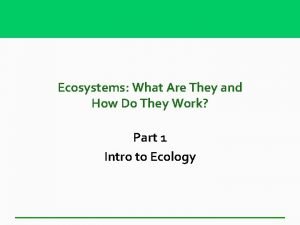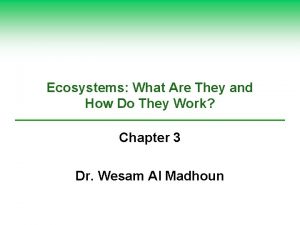Ecosystems What Are They and How Do They

















- Slides: 17

Ecosystems: What Are They and How Do They Work? Chapter 3

Cells Are the Basic Units of Life Cell Theory Hooke, Schwann, Schleiden, Virchow All came up with key concepts that led to the classical cell theory Modern theory also includes Energy and metabolism occur in the cell DNA is passed through mitosis/meiosis All things have the same basic chemical composition

Species Make Up the Encyclopedia of Life Species 1. 75 Million species identified Insects make up most of the known species Perhaps 10– 14 million species not yet identified

Ecologists Study Connections in Nature Ecology – study of the how organisms interact with each other. Levels of organization (smallest to largest) Organism (species) Population Genetic diversity – importance? Community Ecosystem Biosphere

Levels of Organization – Autotrophs v. heterotrophs Terrestrial v. Aquatic Chemosynthesis

What Keeps Us and Other Organisms Alive? Life is sustained by the flow of energy from the sun through the biosphere, the cycling of nutrients within the biosphere, and gravity.

The Earth’s Life-Support System Has Four Major Components Atmosphere - air Hydrosphere - water Geosphere – rock, soil, and sediment Biosphere – living things

Atmosphere 5 different layers Troposphere – extends in range from 17 km - to 7 km above sea level Contains about 78% nitrogen, 21% oxygen and then various other gases Stratosphere – 17 -50 km and lower portion is where ozone is. 95% of UV radiation is blocked here.

Hydrosphere Consists of all water on surface of the planet Water vapor Liquid water Ice Permafrost Oceans cover about 71% of the planet and contain about 97% of the water

Geosphere The crust is most important as it ranges from 5 - 70 km thick 98% of the crust by weight comes from 8 elements O, Si, Al, Fe, Ca, Na, K, Mg Liquids parts will help develop the magnetic poles based on motion

Biosphere Places where all life ends up The goal is to understand the interactions that exist with air, water, and soil.

Natural Capital: General Structure of the Earth

Life Exists on Land in Water Biomes Aquatic life zones Freshwater life zones Lakes and streams Marine life zones Coral reefs Estuaries Deep ocean

Major Biomes along the 39 th Parallel in the U. S.

Three Factors Sustain Life on Earth One-way flow of high-quality energy beginning with the sun Cycling of matter or nutrients Gravity

What Happens to Solar Energy Reaching the Earth? UV, visible, and IR energy Radiation Absorbed by ozone Absorbed by the earth Reflected by the earth Radiated by the atmosphere as heat Natural greenhouse effect

Flow of Energy to and from the Earth
 Insidan region jh
Insidan region jh Chapter 4 ecosystems and communities
Chapter 4 ecosystems and communities Savanna biome plants
Savanna biome plants 6 biomes and aquatic ecosystems answers
6 biomes and aquatic ecosystems answers Chapter 55 ecosystems and restoration ecology
Chapter 55 ecosystems and restoration ecology Chapter 42 ecosystems and energy
Chapter 42 ecosystems and energy Chapter 3 lesson 3 biomes and aquatic ecosystems
Chapter 3 lesson 3 biomes and aquatic ecosystems Differences between aquatic and terrestrial ecosystems
Differences between aquatic and terrestrial ecosystems Regents biology food chains and energy in ecosystems
Regents biology food chains and energy in ecosystems Phosphorus cycle
Phosphorus cycle Lab food chains and energy in ecosystems
Lab food chains and energy in ecosystems Energy flow and chemical recycling in ecosystems
Energy flow and chemical recycling in ecosystems Chapter 55 ecosystems and restoration ecology
Chapter 55 ecosystems and restoration ecology Biomes and aquatic ecosystems
Biomes and aquatic ecosystems River pollution introduction
River pollution introduction 5 oceans in the world
5 oceans in the world Parasitism examples
Parasitism examples Communities biomes and ecosystems
Communities biomes and ecosystems

